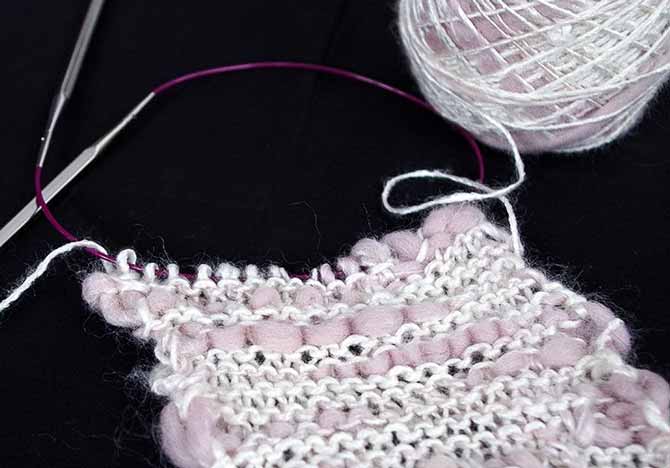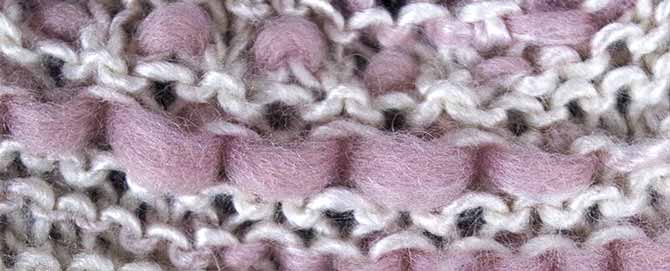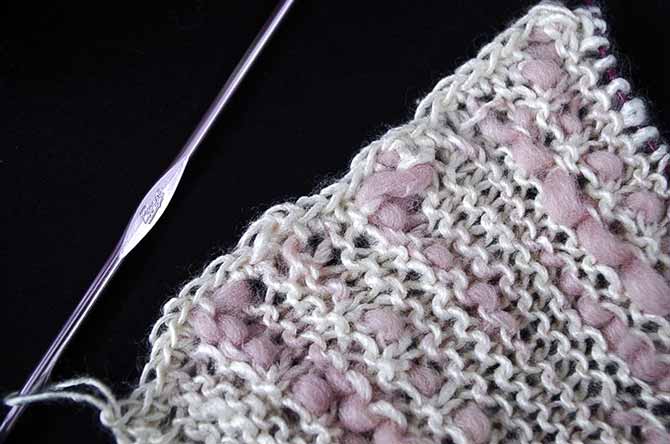
Avoiding pooling textures with thick and thin yarn
In this swatch I’ve knit up, you can see that there are no instances of row upon row of the thicker tufts stacking on top of each other directly or slightly an angle, which would cause a bias in the fabric. Instead, it’s a fairly even distribution of thick rows and thin. There are 2 strategies I used to achieve this.
First, whenever a thicker segment of yarn worked its way up into my feeding hand (it’s my right because I’m a thrower, aka English style knitter), I changed my stitching. I worked: [K1, sl 1 purlwise with yarn in back] across the next few stitches until I was back to knitting with the thin yarn. Then on the return row, I knit across and only purled the stitches I had slipped on the previous row.
The second strategy was to use garter stitch throughout, except for when I worked the slipped stitches I just explained.

Slipped stitches with thick yarn in back of work.

Reverse side of slipped stitches.
As you can see in these 2 photos, the slipped stitches interrupt the puffy bits on the one side of the fabric and enhance the bumps on the opposite side. You have to be flexible and work these slipped stitches only when necessary and perhaps on either side of the fabric, making a truly reversible fabric.

Rough edges with thick and thin yarn
Not everyone will be enamored with the edges that can result from knitting with thick and thin yarn, because, short of cutting the yarn, there’s really no way to avoid the placement of the puffs at the edges. There is a quick fix for this though, which doesn’t completely do away with the bumps, but does train them and calm them down.

Crocheted edge
To lessen the uneven edges of knitting with thick and thin, you can simply use a crochet hook that matches the weight of the thinner sections of the yarn and using a long segment of the thin segment, crochet a simple single-crochet stitch edge, like that pictured above.
Tomorrow, in the final post about knitting with Bamboo Bloom yarn, we’ll look at a cowl pattern that will be completely unique, and a simple way to create a fun, textured accessory.
This is part 4 of 5 in this series.
Go back to part 3: 3 reasons to use larger needles with thick and thin yarn
[shareaholic app=”follow_buttons” id=”23784471″]

2 comments
Reading these instructions helped me resolve my dilemma of working with multicolored, thick and thin yarn. Thank you.
Please let us know how you moved forward with the multicolored thick and thin yarn you are knitting with. We’d love to see your progress.